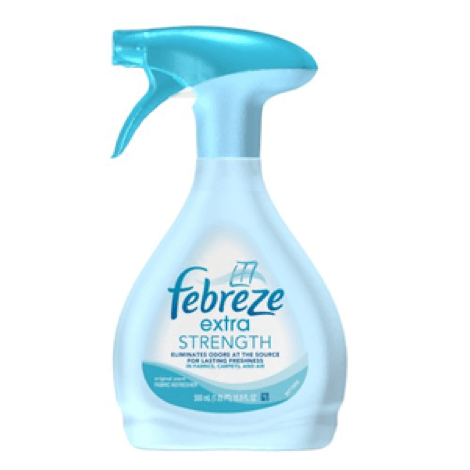If you’ve ever suffered through a poorly received marketing message, you’ll love this story…
It was the mid-1990s, and Procter & Gamble’s team of marketers were stumped.
Just a couple months earlier, the company behind major brands such as Crest, Gillette, and Tide released a new product that seemed like an almost-certain winner. They spent millions developing a colorless, cheap-to-manufacture liquid that could turn any smell odorless.
Simply spray and stinky scents disappear.
As part of the launch, the marketing team created campaigns to promote the product as a way to eliminate odors. One commercial showed a woman spraying her clothes to cover cigarette smells after eating in a restaurant’s smoking section. Another featured a pet lover spraying her dog’s favorite spot on the couch.

The ads ran in heavy rotation in three major test cities…
Surprisingly, Febreze sales flopped.
The confused marketers brought in a Harvard scientist to pore through consumer psychology studies. They also conducted in-depth consumer interviews.
What they discovered resulted in a complete change in their marketing message.
You see, one consumer the team visited was a lady in Phoenix who owned nine cats. Her house was clean and well kept. However, when P&G’s people walked into the living room – where her cats hung out – they were overcome by the strong odor.
Crazy thing is, when asked about the smell, the lady didn’t notice anything. She was desensitized to the scent.
Similar scenarios played out with “noseblind” consumers in stinky homes throughout the U.S.
Researchers also discovered that people who liked Febreze often sprayed it to give rooms a fresh scent after cleaning. They didn’t even use it to cover up odors.
With this knowledge, the marketing team created new campaigns. The original messages were adjusted to highlight Febreze’s freshening effect and how the spray eliminates home odors that you can’t smell (but your guests can).
Sales doubled within two months. A year later, Febreze brought in $230 million.
Not so surprisingly, a similar story played out decades earlier…

In 1924, the Kimberly-Clark Corporation introduced a product designed to remove cold cream and makeup from women’s faces.
It was especially popular in Hollywood, earning endorsements from well-known actresses. In fact, early ads promoted the product as “the new secret of keeping a pretty skin, as used by famous movie stars.”
The throwaway tissues were an instant hit.
Yet manufacturers were stunned to learn many consumers used the product for something other than its intended purpose. Instead of wiping away cold cream and makeup, women were blowing their noses with it.
Kimberly-Clark ran a test. They surveyed consumers using several newspaper ads to find out how the product was being used.
Disposable handkerchief was the winner.
So, in 1930, Kimberly-Clark adjusted its advertising to promote Kleenex’s “new” use – and sales doubled.
Think about these situations and your business…
Are you missing out on sales because your marketing message doesn’t match what your prospects want?
Could a rewrite of your marketing create greater interest and generate more leads?
There’s really only one way to find out…
You must test.
If your marketing isn’t working the way you want it, try different messaging.
Looking for more tips to improve your outbound campaigns? Check out this related piece on increasing the response to your cold email outreach.
Remember that people don’t always use your product or service as you think they should. So, if you educate them about other solutions your product or service provides, you can create additional revenue.
But here’s the problem:
Many businesses don’t continue communication after the first sale. They collect their money, and marketing to that client ends.
As a result, opportunities for buyers to enjoy bigger benefits (and spend more) get overlooked.
The fact is, people typically make first purchases to solve a single problem or reach a specific outcome. You likely offer additional solutions that your clients might buy – they just need to know about them.
So, your job is to consistently share ways to get the best use out of your product or service (when you do this outreach, you also give clients reasons to refer you).
Let me be transparent and use my business as an example…
Many clients come to me because they have marketing pieces they need written – or they want me to create and implement a marketing plan for reaching an objective in their business.
They have an idea of what’s needed…
…But it’s not always the best use of my services.
So, I use my marketing (like these articles) to share additional services while proving my ability to solve other problems. This process also strengthens relationships with clients because they get extra value.
Of course, email is one way to communicate after the first sale. You may have other options that work best for your business.
The key is to just keep the communication going. Do so, and you’re bound to bring in bigger bucks from your current clients.
Check out an episode of the Beyond 7 Figures Podcast with Charles Gaudet: Ep. 21 Jeremy Harbour on Buying a Business as a Growth Strategy.
(By Tom Trush)
